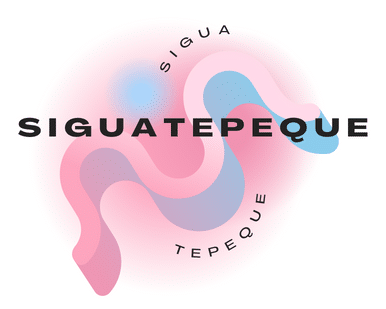Ultimate guide to customs compliance for calais border trade

Ultimate Guide to Customs Compliance for Calais Border Trade
If you are involved in trade across the Calais border, understanding and complying with customs regulations is crucial to avoid delays, fines, and other complications. Here is a comprehensive guide to help you navigate the complex world of customs compliance for Calais border trade.
Preparing for Your Journey: Understanding the Basics
Before you embark on your journey, it is essential to be border ready. This involves several key steps to ensure that your goods and vehicle comply with all necessary regulations.
Also to read : Navigating customs compliance for calais border trading
What You Need to Know
- Goods Movement Reference Number: Use this number to check if your goods need to be inspected through the ‘Check if you need to report for an inspection’ service1.
- Customs Declarations: Ensure you have all relevant paperwork, including export declaration references and a master unique consignment reference if applicable1.
- Authorised Consignor or Consignee: If you are using these services, you may not need to attend an inland border facility for certain procedures1.
When You Need to Attend an Inland Border Facility
Not all goods require a visit to an inland border facility, but there are specific scenarios where it is mandatory.
Scenarios Requiring Attendance
- Goods Inspection: If your goods have been flagged for a compliance check, you must attend an inland border facility unless you have an existing commercial agreement1.
- Common Transit Convention: You need to attend if you are starting or ending transit movements under this convention, unless using an Authorised Consignor or Consignee1.
- Specific Ports: If you are travelling through the Port of Dover, Eurotunnel, or Holyhead and have been instructed to report for goods checks1.
Documents You’ll Need to Bring
Having the right documents is vital to avoid any issues during your visit to the inland border facility.
Have you seen this : How to Overcome Compliance Hurdles for Fintech Innovations in the UK?
Key Documents
- Local Reference Number (LRN): Required for Common Transit Convention movements1.
- Export Declaration References: Include these in a goods movement reference or a master unique consignment reference1.
- ATA Carnet: Necessary for both inbound and outbound movements involving ATA Carnets1.
- CITES Permit: Required for movements involving endangered species1.
Here is a detailed list of documents you might need:
- Local Reference Number (LRN)
- Export Declaration References
- Included in a goods movement reference
- Or a master unique consignment reference
- Transit Accompanying Document (TAD)
- Customs Entries
- Entry numbers and dates of entry
- ATA Carnet documents
- CITES permit
Locations and Functions of Inland Border Facilities
Knowing where to go and what services are available at each facility is crucial.
Facility Locations and Functions
Here is a table summarizing the key locations and their functions:
| Site | Location | Functions |
|---|---|---|
| Holyhead | Holyhead inland border facility, Parc Cybi, A55 Junction 2, Holyhead | Start transit movement, End transit movement, ATA Carnets stamp, CITES |
| Sevington | Sevington inland border facility, Ashford TN25 6GE | Start transit movement, End transit movement, ATA Carnets stamp, CITES, SPS checks |
| Stop 24 | Stop 24, Folkestone Services, Junction 11 M20, Hythe, CT21 4BL | End or start transit movement of excluded Sevington vehicles, ATA Carnets not endorsed |
For more detailed information on each facility, including specific restrictions and additional services, you can refer to the official government guidelines1.
What to Expect When Visiting an Inland Border Facility
Understanding the process at the facility can help you prepare and minimize delays.
Arrival and Inspection
- Traffic Management: You will be directed by traffic management marshals and monitored by automatic number plate recognition cameras1.
- Security Checks: A quick visual inspection of your vehicle will be conducted at the entry checkpoint1.
- Paperwork Processing: You will need to present your documents to the front office and wait in your vehicle while the paperwork is processed1.
Here is an overview of the steps you can expect:
- Arrival and direction by traffic management marshals
- Automatic number plate recognition cameras
- Security checks at the entry checkpoint
- Parking and engine shutdown
- Presentation of documents to the front office
- Waiting in your vehicle for paperwork processing
- Receipt of approval or non-approval and subsequent actions
Duration and Facilities
Knowing how long the process will take and what facilities are available can help you plan better.
Duration of Checks
- The process typically takes between 1 to 2 hours, and facilities are manned 24/71.
Available Facilities
- All sites provide water, toilets, and handwashing facilities. Additional facilities vary by site1.
Import Control System 2 (ICS2) and Its Implications
For traders moving goods into the EU, the new Import Control System 2 (ICS2) has significant implications.
What is ICS2?
- ICS2 is a pre-arrival IT security system designed to enhance safety, security, and supervision of goods entering the EU2.
Additional Information Required
- Place of Acceptance and Delivery
- EU Buyer address and EORI number
- Seller address
- 6-digit commodity code
- Countries of routing (if applicable)2
Here is a detailed list of the additional information required:
- Place of Acceptance (Collection) - city & country
- Place of Delivery - city & country
- EU Buyer address & EORI number
- Seller address
- 6-digit commodity code
- Countries of routing (if applicable)
Excluded Vehicles and Special Considerations
Certain vehicles may be excluded from certain facilities due to specific reasons.
Excluded Vehicles
- Vehicles with abnormal loads or hazardous goods may be directed to alternative facilities like Stop 241.
Holyhead Restrictions
- Holyhead cannot receive tankers containing over 3,000 litres of hazardous or contaminant liquid1.
Here are some key points to consider for excluded vehicles:
- Abnormal loads (weight, axle load, width, length)
- Hazardous goods (explosives, nuclear material, high consequence dangerous goods)
- Vehicles subject to Special Types General Order (STGO) 2003
- Holyhead restrictions on tankers
Practical Insights and Actionable Advice
To ensure a smooth experience, here are some practical tips:
Be Prepared
- Ensure all necessary documents are in order before arriving at the facility.
- Use the ‘Check if you need to report for an inspection’ service to avoid unnecessary delays1.
Plan Your Time
- Allow between 1 to 2 hours for the customs clearance process.
- Facilities are open 24/7, but planning ahead is still crucial1.
Follow Instructions
- Adhere strictly to instructions from customs authorities to avoid penalties.
- Failure to comply can result in fines of up to £2,5001.
Navigating customs compliance for Calais border trade involves several critical steps and considerations. By understanding the requirements, preparing the necessary documents, and knowing what to expect at inland border facilities, you can ensure a smooth and efficient process.
For more detailed information and specific guidelines, you can refer to the official resources provided by the government and other authoritative bodies.
By following this guide, you can ensure that your goods move across the border with minimal hassle, adhering to all the necessary customs regulations and safety protocols.
